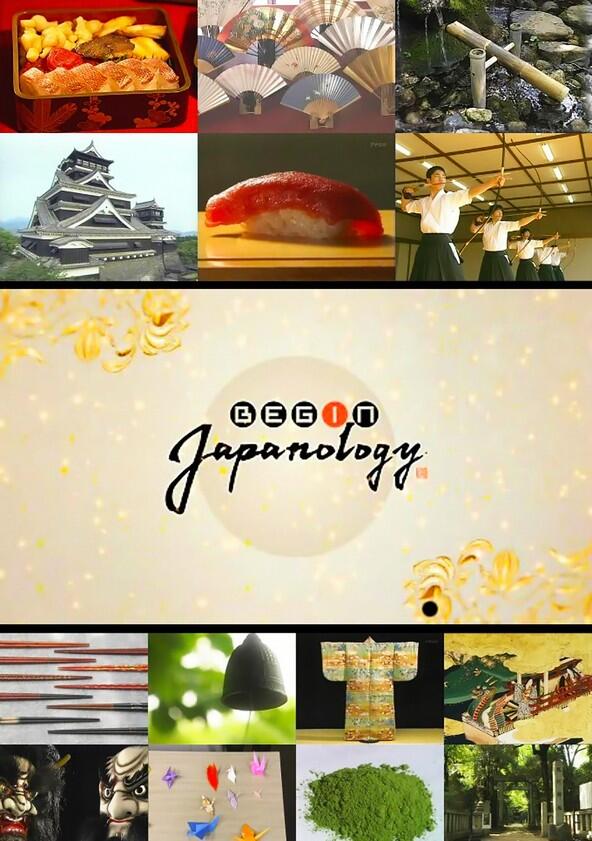Begin Japanology - Season 3 / Year 2009

Season 3 / Year 2009

Episodes

Nishijin-ori

Kyoto Lacquerware

Sake

Katsura Rikyu

Bonsai

The Four Seasons

Hina Dolls

Nagasaki

Five-Story Pagodas

Cherry Blossoms

Chopsticks

Aizome

Bunraku

Kiriko Cut Glass

Traditional Folk Houses

Tea Ceremony

Soba
Affordable, casual and tasty, soba noodles are one of the most popular foods in Japan. Whether as a light lunch, as part of an evening's carousing, or at special once-a-year ceremonies, these nourishing noodles made from buckwheat flour are enjoyed throughout the country. The custom of eating soba caught on more than three centuries ago as an affordable street food among the ordinary people of Japan. It was a specialty of the shogun's capital, Edo (modern-day Tokyo), where it dovetailed perfectly with the busy lifestyle of the townspeople. There are various types of soba noodle, and they're prepared in many different ways - cold, with a simple dip; hot in a rich, savory soup; or served with a variety of tasty toppings, such as tempura, egg, deep-fried tofu, or slices of duck meat. These preparations are enjoyed year-round. Generations of soba craftsmen have developed techniques to draw out the flavor from the plain-tasting buckwheat grain. There are still many restaurants that make their noodles in the traditional way. In recent years, there's also been a boom for home-made noodles. Soba-making classes attract plenty of aspiring soba-makers, often middle-aged or older men aiming to take their love of soba to the next level. Discover how these simple noodles developed from a humble street food and are now prized by local gourmets.

Origami

Imari Porcelain

Folding Fan

Kaiseki Cuisine

The Sounds of Japan

Masks

Satoyama

Kendo

The Fragrances of Japan

Spinning Tops

Rock and Stone

Ink Brushes
Since ancient times, people in Japan have devoted themselves to the traditional art of calligraphy, shodo. Writing characters with ink on paper, they create works that express the inherent beauty of the Japanese written language. In shodo, brushes are used for applying the ink to the paper. The expressiveness of the characters derives from variations in the speed and force that the calligrapher uses to move the brush. The brushes themselves are simple objects, made from bundles of animal hair or other materials bundled together and fixed to a shaft. The actual materials used will depend on the style of calligraphy that is desired. Around 80 percent of Japanese ink brushes are produced in Kumano, Hiroshima Prefecture. There are numerous workshops in this town where skilled craftsmen still make the brushes by hand in the traditional way. On this edition of BEGIN Japanology, we examine the history, development and contemporary applications of ink brushes, introducing these simple implements that have been so essential to the development of Japanese writing and painting.

Tsukemono

Dogs

Ramen

Rice

Shinto Shrine

Festivals
In Japan, festivals are known as matsuri. Many matsuri are colorful and boisterous occasions. Matsuri are typically associated with a Shinto shrine. Local people gather to pray and give thanks to the enshrined deity for agricultural bounty, health, safety and security. Over the years, these gatherings have evolved into elaborate events that frequently feature dancing, masks and magnificent floats. Entire local communities may be drawn into the preparations for festivals, which have nurtured some of the most refined arts and crafts in Japan. Even the sophisticated Noh theatre has festival origins, and, in some communities, apprentices will spend years learning a craft such as woodcarving specifically for its application in an annual matsuri. Some festivals involve breathtaking demonstrations of courage and skill, and all contribute to stronger family and community bonds. On this edition of BEGIN Japanology, we present some of the most famous festivals in Japan and consider the links to community and culture.

Shinkansen

Gagaku

Marriage

Shogi

Nabe Cuisine

Sword
Recently Updated Shows

The Daily Show
Hosted by a rotating cast of comedy greats, The Daily Show remains the go-to source for provocative satire, insightful interviews and an award-winning team of correspondents and contributors.

Irish Blood
Irish Blood focuses on Fiona, whose path in life is earmarked by her father, Declan, who seemingly abandoned her and her mother on her tenth birthday. After years of channelling anger toward him, to the benefit of her litigious clients, a message from her father sends her to Ireland. There she learns key truths about her father as well as a family that doesn't know she exists, and, moreover, that the story of abandonment that has shaped her entire life - was a lie. A lie intended to protect her and her mother from her father's shady business dealings. Fiona resolves to uncover the full truth about her father and reconnect with the parent she only thought she knew.

Last Week Tonight with John Oliver
On Last Week Tonight with John Oliver, John Oliver presents a satirical look at the week in news, politics and current events.

Your Friends & Neighbors
Coop is a recently divorced hedge fund manager who, after being fired, resorts to stealing from the wealthy residents in his tony upstate New York suburb in order to keep his family's lifestyle afloat. These petty crimes begin to reinvigorate him until he breaks into the wrong house at the wrong time.

Government Cheese
Government Cheese is a surrealist family comedy set in 1969 San Fernando Valley that tells the story of the Chambers, a quirky family pursuing lofty and seemingly impossible dreams, beautifully unfettered by the realities of the world. When Hampton Chambers is released from prison, his long-awaited family reunion doesn't go quite as he'd planned. During his absence, Hampton's wife, Astoria, and sons, Einstein and Harrison, have formed an unconventional family unit, and Hampton's return spins their world into chaos.